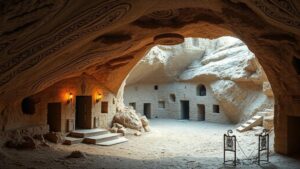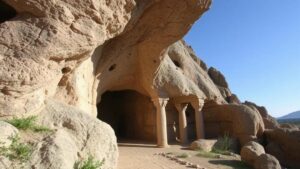Exploring the jungles of Sumatra for remnants of the Srivijaya maritime empire.
Exploring the Jungles of Sumatra for Remnants of the Srivijaya Maritime Empire
The islands of Indonesia, particularly Sumatra, are rich in history, with the remnants of ancient civilizations woven intricately into their landscapes. Among the most notable of these civilizations is the Srivijaya maritime empire, which flourished from the 7th to the 13th century. This article delves into the dense jungles of Sumatra, examining the legacy of Srivijaya, its cultural significance, and the ongoing archaeological exploration that seeks to uncover its enigmas.
The Rise of Srivijaya
Srivijaya emerged around the 7th century as a dominant maritime power, controlling crucial trade routes between the Indian Ocean and the South China Sea. Located in present-day Palembang, South Sumatra, the empire was strategically positioned to facilitate commerce, particularly in spices, silks, and other valuable goods. Its influence extended through the Malay Archipelago, encompassing parts of modern-day Malaysia, Thailand, and Cambodia.
Archaeological Discoveries
Modern archaeological efforts have uncovered significant remnants of the Srivijaya empire within the jungles of Sumatra. Researchers have discovered ancient inscriptions, temple ruins, and artifacts that highlight the empires advanced culture and trade networks.
- In the 1920s, Dutch archaeologist A.J. Bernet Kempers discovered a large number of stone inscriptions in Palembang, which identified the presence of Srivijaya.
- Recent excavations have revealed foundations of Buddhist temples, such as the Muara Jambi temple complex, suggesting a profound religious devotion which underpinned the states legitimacy.
The Role of Buddhism
Buddhism played a pivotal role in the Srivijaya empire, acting as both a unifying ideology and a tool for trade negotiations. The empire was known as a center for Buddhist learning, attracting scholars from across Asia.
Evidence shows that Srivijaya developed extensive networks of monasteries and universities, helping to propagate Buddhist teachings throughout the region. For example, the influence of Srivijaya can be seen in the spread of Mahayana Buddhism to neighboring territories, marking it as a cultural beacon.
The Decline and Legacy
Despite its prominence, Srivijaya began to decline in the late 13th century, largely due to a combination of internal strife and external pressures from rival powers, such as the emerging Majapahit empire. By the early 14th century, Srivijaya had effectively ceased to exist as a dominant force in Southeast Asia.
But, the legacy of Srivijaya endures, influencing trade routes, cultural exchanges, and political structures in the region. The remnants of this empire are critical for understanding the historical complexities of Southeast Asia.
Exploring the Jungles Today
Today, the jungles of Sumatra are a treasure trove for archaeological exploration. Researchers are employing modern techniques, including aerial surveys and ground-penetrating radar, to uncover more remnants of the Srivijaya empire.
Adventurers and scholars alike are drawn to the enigmatic beauty of the Sumatra jungles, where they can trek through lush foliage and encounter hidden ruins that whisper the stories of an empire long lost. region, often difficult to access, provides an authentic experience of exploration, connecting individuals directly with history.
Real-World Applications and Takeaways
The study of Srivijaya’s remnants is not merely an academic pursuit; it has profound implications for contemporary societies. This exploration helps to:
- Enhance understanding of early trade networks that shaped global commerce.
- Inspire modern cultural exchanges through the revival of historical narratives.
- Promote archaeological tourism that supports local economies while preserving heritage.
As we continue to explore the jungles of Sumatra, we unveil not only remnants of the Srivijaya maritime empire but also a mirror reflecting our present and future potential for unity through cultural appreciation.



